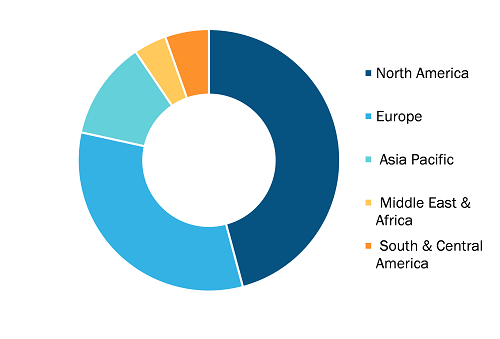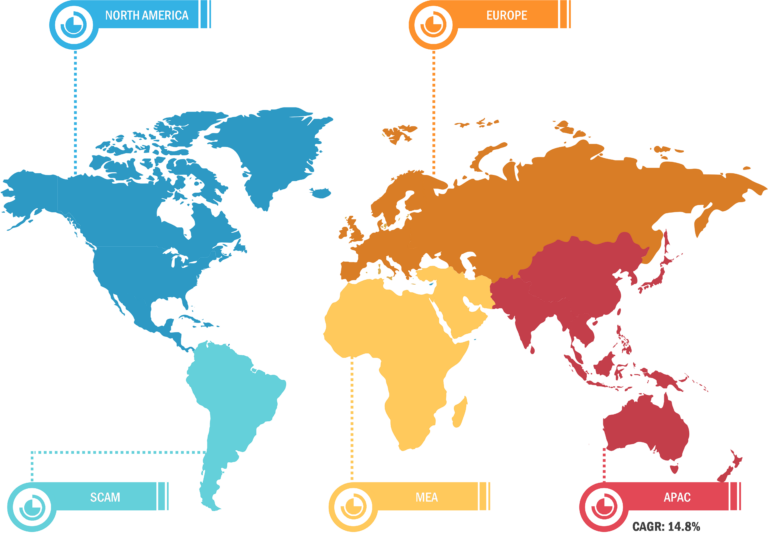
Speech and Language Disorder Market
Growing prevalence of speech and language disorders and increasing cases of neurodegenerative diseases and stroke propel the market growth. However, the unavailability of speech therapy in underdeveloped or remote areas and the lack of healthcare professionals are factors hampering the speech and language disorder market growth.
Use of Artificial Intelligence for Speech and Language Therapy Acts as Trend of the Speech and Language Disorder Market
Although it is difficult in the near term to create and train a significantly large team of speech therapists to meet the demand, the adoption of smart solutions and newer technologies, such as AI and Internet of Things (IoT), can be the key to the next breakthrough in patient care. During 2011–2020, a significantly larger number of devices were connected to the Internet than ever before, and this trend will continue steadily in the coming decades as well. AI has significantly advanced speech-language therapy, aiding speech-language pathology by crowdsourcing the data, gamification, machine learning algorithms, and biofeedback. Numerous grants and projects are currently being implemented to help develop AI-assisted speech therapy applications. The University of Buffalo’s institute for AI, supported by a US$ 20 million grant, develops systems for individuals with speech and language challenges. Projects such as Project Euphonia and Voicett use machine learning to assist those with speech disabilities. Publicly available AI applications, such as DALL-e and ChatGPT, also contribute to enhancing expression for users with disabilities. ChatGPT can help patients practice their conversational skills and receive feedback, whereas DALL-e can take a written description and generate a visual representation of the described object, enabling better communication. AI also benefits SLPs in clinical decision-making and treatment recommendations, improving accuracy, generating personalized exercises, and providing biofeedback during speech production. One of the key benefits of AI in speech therapy is its ability to provide personalized activities. AI algorithms can analyze a child’s speech patterns, identify areas of improvement, and generate targeted exercises to address specific challenges. This individualized approach promotes more efficient and effective therapy outcomes. AI applications can offer real-time feedback and biofeedback during speech production, allowing children to monitor and adjust their articulation and pronunciation. This immediate feedback encourages self-correction and facilitates the development of accurate speech and language skills.

The scope of the speech and language disorder market report covers North America (the US, Canada, and Mexico), Europe (Spain, the UK, Germany, France, Italy, and the Rest of Europe), Asia Pacific (South Korea, China, India, Japan, Australia, and the Rest of Asia Pacific), Middle East & Africa (South Africa, Saudi Arabia, the UAE, and the Rest of Middle East & Africa), and South & Central America (Brazil, Argentina, and the Rest of South & Central America). North America held the largest share of the global market in 2022 owing to increasing cases of neurodegenerative disorders, increasing use of application-based speech therapy, increasing prevalence of speech disorders such as disfluency, and the presence of key market players. As per the National Institute on Deafness and Other Communication Diseases, about 180,000 American are diagnosed with aphasia annually, and currently, ~1 million people are suffering from aphasia in the US. According to IntechOpen, stroke is the fifth leading death cause in the US, and about one stroke occurs approximately every 40 seconds, and stroke-related death occurs roughly every 4 minutes. According to the Parkinson’s Foundation data, in 2022, ~1 million people in the US are living with Parkinson’s disease, and it is expected to reach 1.2 million by 2030.
In North America, the US held the largest speech and language disorder market share in 2022. The growth of this market is largely driven by increasing cases of neurodegenerative diseases due to obesity, diabetes, and hypertension; increasing cases of speech disorders, especially among children; growing use of telehealth technologies for the treatment of speech and language disorder; and use of AI and machine learning for the development of therapies.
The speech and language disorder market analysis has been carried out by considering the following segments: type, cause, disorder type, category, provider, and geography. The speech and language disorder market, by type, is bifurcated into hardware and software. The software segment is further categorized into web-based and app-based. Based on cause, the market is divided into stroke, injury, neurodegenerative diseases, and others. The neurodegenerative diseases segment is further divided into amyotrophic lateral sclerosis, Parkinson’s disease, and Huntington’s disease. Based on disorder type, the market is divided into articulation disorders, phonological disorders, voice disorders or resonance disorders, language disorders, and others. In terms of category, the speech and language disorder market is segmented into adults and pediatrics. The market, by provider, is segmented into healthcare facilities, speech therapy centers, rehabilitation centers, and others.
Speech and Language Disorder Market: Competitive Landscape and Key Developments
Tactus Therapy Solutions Ltd, Virtual Speech Center, The Meco Group, MyTalkTools Mobile, iCommunicate, iConverse, Skylineinnovation, Speak Up, Proloquo2Go, and Talkitt are among the prominent players profiled in the speech and language disorder market report. In addition, several other players have been studied and analyzed during the study to get a holistic view of the market and its ecosystem. These companies focus on geographic expansions and new product launches to meet the increasing demand from consumers worldwide and increase their product range in specialty portfolios. Their global presence allows them to serve a large customer base, subsequently facilitating market expansion.







